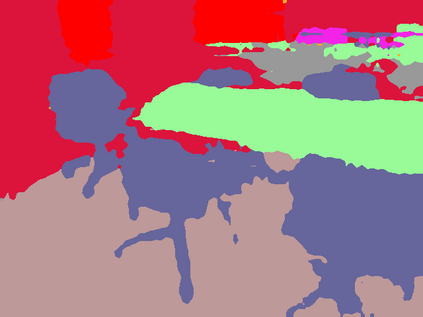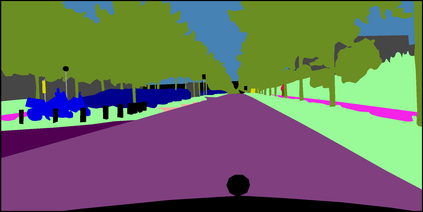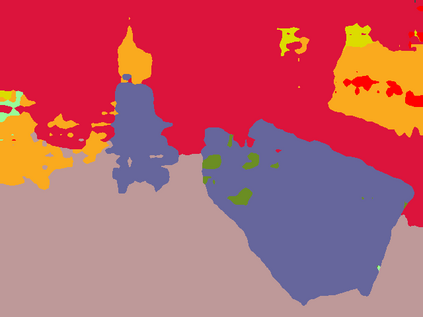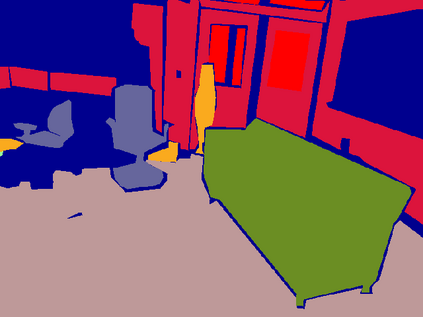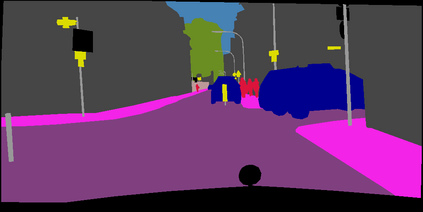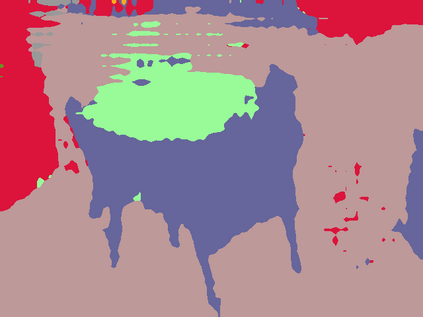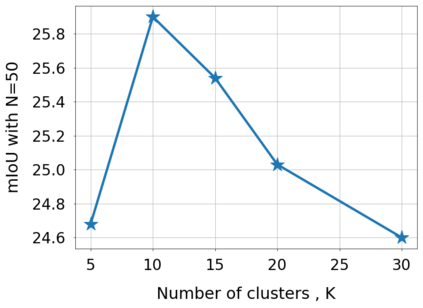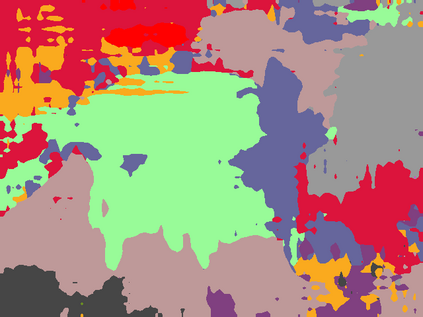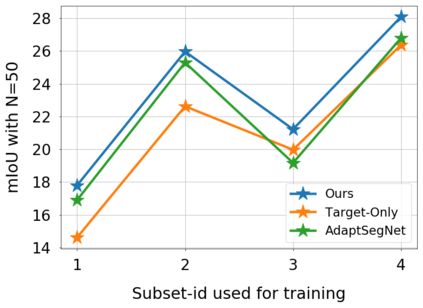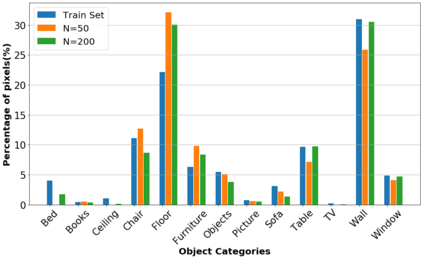Domain adaptation for semantic segmentation across datasets consisting of the same categories has seen several recent successes. However, a more general scenario is when the source and target datasets correspond to non-overlapping label spaces. For example, categories in segmentation datasets change vastly depending on the type of environment or application, yet share many valuable semantic relations. Existing approaches based on feature alignment or discrepancy minimization do not take such category shift into account. In this work, we present Cluster-to-Adapt (C2A), a computationally efficient clustering-based approach for domain adaptation across segmentation datasets with completely different, but possibly related categories. We show that such a clustering objective enforced in a transformed feature space serves to automatically select categories across source and target domains that can be aligned for improving the target performance, while preventing negative transfer for unrelated categories. We demonstrate the effectiveness of our approach through experiments on the challenging problem of outdoor to indoor adaptation for semantic segmentation in few-shot as well as zero-shot settings, with consistent improvements in performance over existing approaches and baselines in all cases.
翻译:由相同类别组成的各数据集的语义区隔的适应领域最近取得了若干成功。然而,更一般的假设是,当源和目标数据集与非重叠标签空间相对应时,源和目标数据集与非重叠标签空间相对应。例如,区段数据集的类别变化在很大程度上取决于环境或应用类型,但根据特性调整或差异最小化的现有办法却有许多宝贵的语义关系。基于特征调整或差异最小化的现有办法没有考虑到这种类别转移。在这项工作中,我们提出了基于分类分组至适应(C2A)的计算高效集群办法,用于对不同但可能相关的分类数据集的域进行域间调整。我们表明,在改变的地段空间实施的这种组合目标可以自动选择不同源和目标领域的类别,以便改进目标性能,同时防止不相干类别出现负面转移。我们通过实验,通过在室内对难以应对的问题进行室内适应,在微粒和零发环境中进行语义区间分化,我们的方法是有效的,在所有情况中,在现行方法和基线方面都得到了一致的改进。





